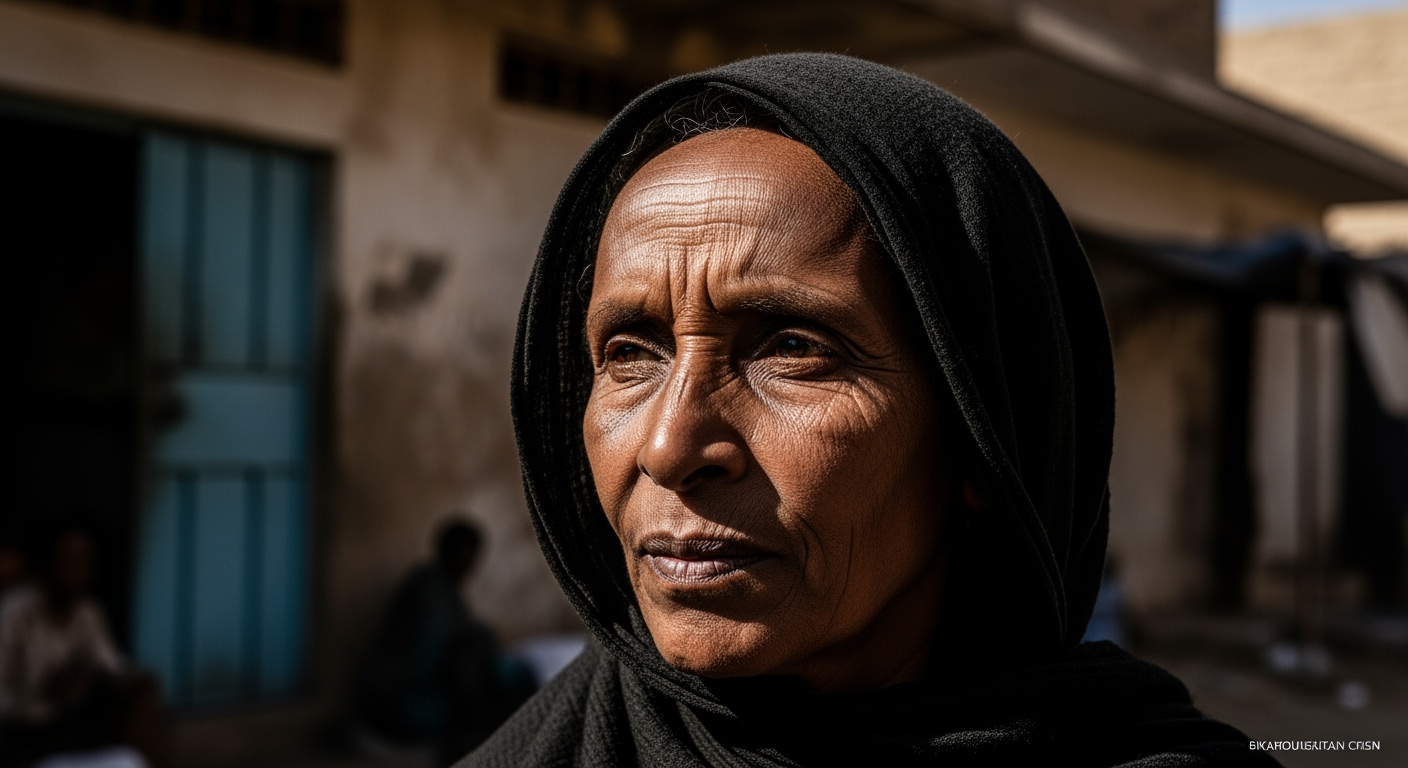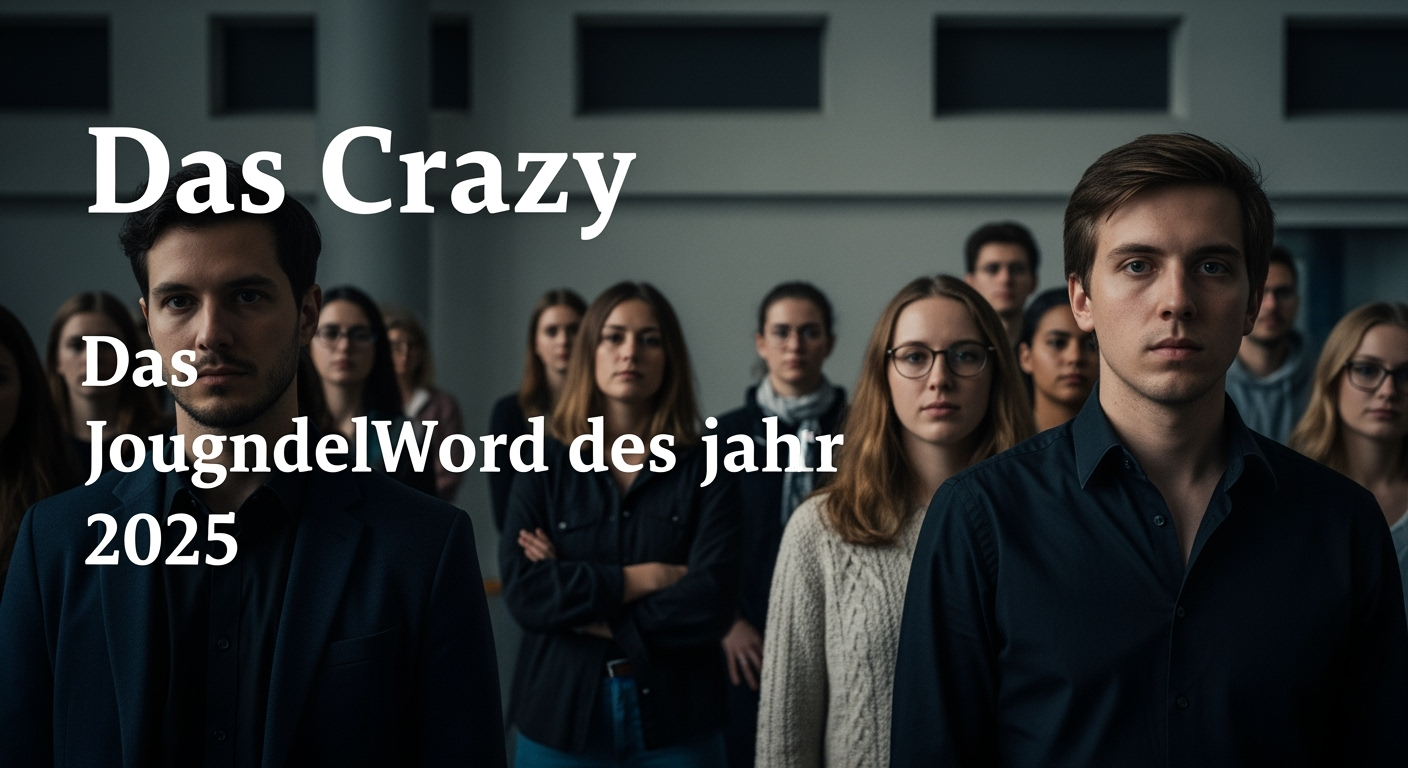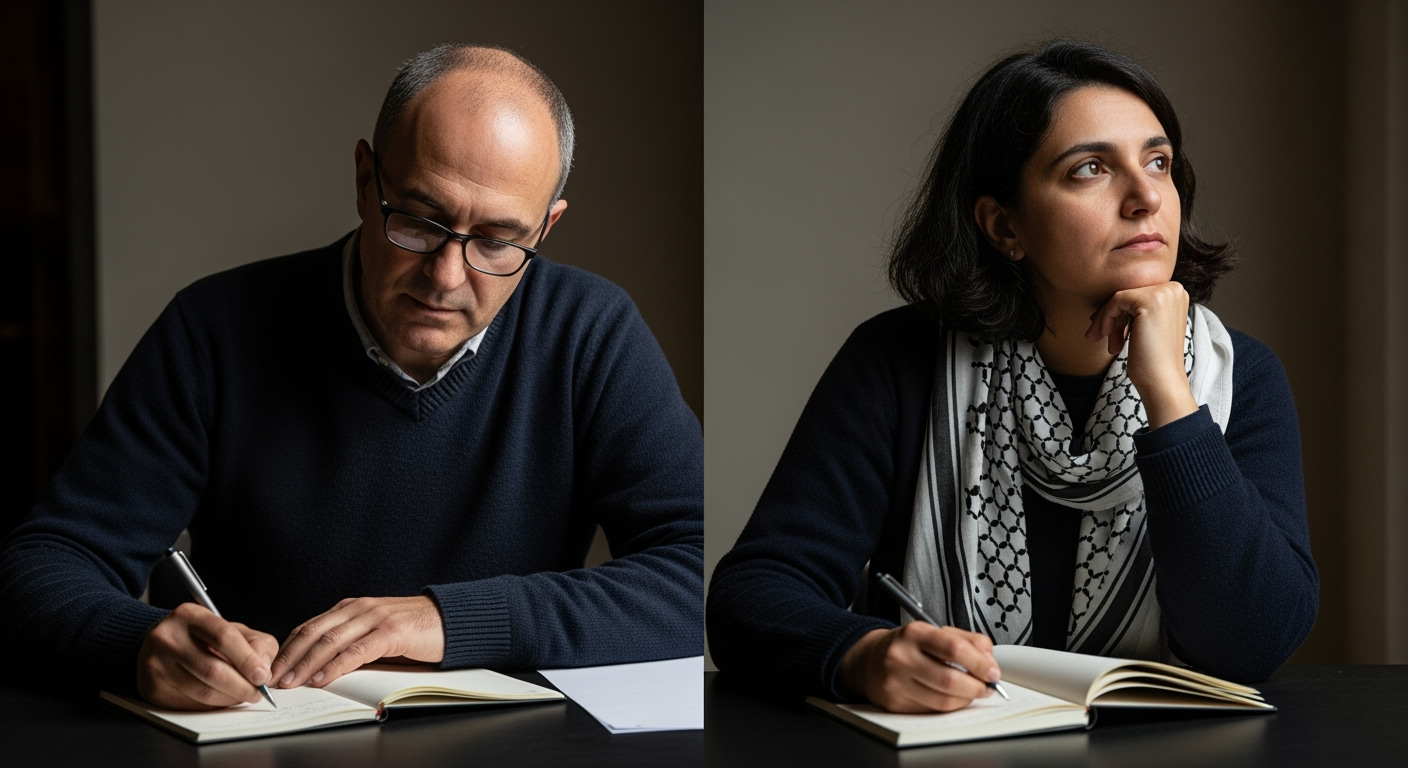Related Articles

"Khartoum" Documentary Puts a Human Face on Sudan's Unfolding Crisis

Daring Daylight Heist Shakes Louvre, Priceless Jewels Vanish





In the shadow of a protracted conflict, Israeli and Palestinian authors are increasingly turning to literature as a powerful conduit for processing, documenting, and conveying the profound and often intergenerational trauma that defines their respective societies. Their works, ranging from fiction and poetry to memoirs, offer deeply personal and collective reflections on displacement, loss, and resilience, providing invaluable insights into the human cost of an unending struggle. This literary outpouring serves not only as a historical record but also as a vital mechanism for cultural survival and an attempt to foster understanding, even amid profound division.
For Palestinian writers, the Nakba, or "catastrophe" of 1948, serves as a foundational trauma, its repercussions woven into the fabric of daily life and passed down through generations. This is frequently depicted as an "insidious trauma" due to its continuous nature, an "unending Nakba" that resists being relegated to the past. Authors use their craft to articulate the collective suffering, document experiences of displacement, and resist cultural erasure.
Ghada Karmi, in her memoirs such as "In Search of Fatima" and "Return," meticulously chronicles her personal experiences of displacement and loss against the backdrop of major political events that have shaped the Middle East. Her narratives illuminate the challenges of living away from one's homeland, a theme echoed in the works of Edward Said, who emphasized the importance of narration in asserting identity and resisting erasure for colonized peoples. Ghassan Kanafani, a seminal figure in Palestinian literature, explored the layered grief of personal and national loss through characters confronting their past, as seen in "Returning to Haifa". His short stories, like "Land of the Sad Oranges," poignantly capture the emotional devastation of dispossession.
Contemporary Palestinian authors continue to explore these themes with urgency. Susan Abulhawa's "Mornings in Jenin" and "Against the Loveless World" delve into the ripple effects of displacement and war on Palestinian families across generations, examining how conflict fractures identity and family bonds. Adania Shibli's "Minor Detail" confronts themes of erasure, silence, and violence by intertwining historical atrocities with contemporary investigations, depicting how bodies and societies carry generational trauma. Hala Alyan's "Salt Houses" also powerfully portrays the struggles of generations grappling with displacement and a severed connection to their history. Atef Abu Saif, who served as the Palestinian Authority's Minister for Culture, published "Don't Look Left: A Diary of Genocide" after experiencing the 2023 conflict in Gaza firsthand. His work documents the horrors and expresses a writer's obligation to recount events as they transpired, highlighting the role of writing in regaining a sense of self amid profound destruction.
Palestinian literature often functions as both a cultural archive and a form of narrative therapy, transforming inherited trauma into a space for agency and articulation. Writers like Raja Shehadeh, through works such as "Palestinian Walks," use the landscape itself as a palimpsest of trauma, bearing the scars of war and occupation across generations. This body of work collectively underscores that for many Palestinians, trauma is not a singular event but a recurring inheritance, passed down through storytelling and the very act of survival.
For Israeli authors, literature similarly becomes a space to explore deep-seated anxieties stemming from historical persecution and ongoing regional conflicts. The Holocaust, alongside centuries of pogroms, forms a central "intergenerational memory of trauma" that profoundly shapes Israeli identity and a pervasive focus on national survival. This collective trauma is further compounded by the continuous cycle of wars since the state's establishment.
Dahlia Ravikovitch, a prominent Israeli poet, explored trauma, gender, and nationalism in her works, challenging conventional notions of victimhood and advocating for an Israeli identity that embraces, rather than excludes, the "Other". Her poetry demonstrates the potential of "active passivity" to enact change through testimony. Early Israeli literature also confronted the moral complexities of conflict. S. Yizhar's "Khirbet Khizeh," published in 1949, offers a Jewish soldier's perspective on the demolition of an Arab village during the 1948 war, an early literary acknowledgment of Palestinian expulsion that sparked significant controversy.
Savyon Liebrecht, a master of the short story born to Holocaust survivors, delves into the trauma of survivors and the tensions between ordinary Israelis and Palestinians. She articulated that the very subjects that trouble, inspire, and haunt a person will inevitably reveal themselves in their work, often in disguised forms. Ronen Bergman's "Rise and Kill First," a history of Israel's intelligence services, explores the ethical and strategic questions surrounding targeted assassinations, reflecting another dimension of the security-driven mindset shaped by trauma.
More recently, authors like Zeeva Bukai, in her debut novel "The Anatomy of Exile," explore the lasting scars of intergenerational trauma within a Mizrahi Israeli family. The narrative, set against the backdrop of the 1967 and 1973 wars, illuminates how a character's personal anxieties are rooted in historical events, driving fears that can influence present-day interactions and relationships. The novel's themes of diaspora, war, and immigration resonate deeply, especially in the context of recent conflicts.
Despite the distinct historical origins and ongoing manifestations of trauma for Israelis and Palestinians, a common thread lies in the literature's attempt to grapple with profound suffering. However, a significant obstacle to peace and understanding remains the "conflict of narratives" and a "clash of victimhoods". Each side often struggles to acknowledge, or genuinely accept, the historical narrative of the other, leading to a "weaponization of memory" where past grievances are amplified into political absolutism.
Psychological research suggests that shared trauma, while creating strong bonds within a group, can also lead to an "us versus them" orientation, making genuine empathy across communal lines exceptionally challenging. For example, the October 7, 2023, attacks triggered in many Israelis an intergenerational memory of trauma from the Holocaust and pogroms, while Israel's subsequent military actions in Gaza evoked a reliving of the Nakba for Palestinians. This cycle perpetuates a state where both sides perceive themselves as victims, fueling righteous rage and a desire for retribution.
However, some literary efforts, implicitly or explicitly, explore the shared human experience of suffering. The act of writing itself can be a step towards imaginative freedom, offering a means to process and potentially transcend the narratives of victimhood that can otherwise become ingrained in identity. The existence of diverse literary voices, including those from the Palestinian and Jewish diasporas, indicates a broader global effort to unpack the complexities of the conflict for a wider audience, moving beyond restrictive nationalisms.
The events of October 7, 2023, and the subsequent war have dramatically intensified the urgency and depth of trauma reflected in both Israeli and Palestinian literary and societal discourse. Studies show a significant increase in mental health conditions, including PTSD, depression, and anxiety, among the Israeli populace following the attacks. For Gazans, the ongoing conflict has deepened an already chronic and unrelenting trauma, described as defying traditional definitions of PTSD because there is "no 'post'" in Gaza's context; the trauma is continuous.
Journalists, for instance, particularly Palestinian journalists covering the war in Gaza, face collective trauma underpinned by physical isolation and social pain, yet also demonstrate resilience through their reporting. The destruction of cultural institutions and the profound loss experienced in Gaza, as articulated by writers like Atef Abu Saif, highlight an intensified commitment to preserving memory and culture through writing.
On the Israeli side, the recent events have reignited historical consciousness, with public discourse often flooded with images and memories of past traumatic episodes like the Holocaust and earlier wars, blurring the lines between past and present. Authors and therapists alike are grappling with how to address this heightened state of collective and individual anguish, seeking ways for literature and psychological understanding to contribute to healing in an incredibly fraught environment.
The literary landscape of Israel and Palestine stands as a testament to the enduring power of art to bear witness to profound human experience. In a region where historical narratives often clash, and trauma is deeply embedded in collective memory, authors on both sides continue to craft stories that document their suffering, challenge perceptions, and affirm their identities. While their narratives frequently highlight deep divisions, the shared act of transforming harrowing experiences into written word underscores a common human drive to make sense of violence, loss, and the persistent search for meaning.
Ultimately, this ongoing literary dialogue, fraught with pain and marked by resilience, offers a crucial avenue for understanding. By giving voice to the complex layers of trauma, these authors not only preserve their histories but also lay potential groundwork for empathy, inviting readers globally to confront the realities of the conflict through the lens of human experience. The hope persists that through these individual and collective testimonies, a path toward mutual recognition and a more peaceful future, however distant, might eventually emerge.